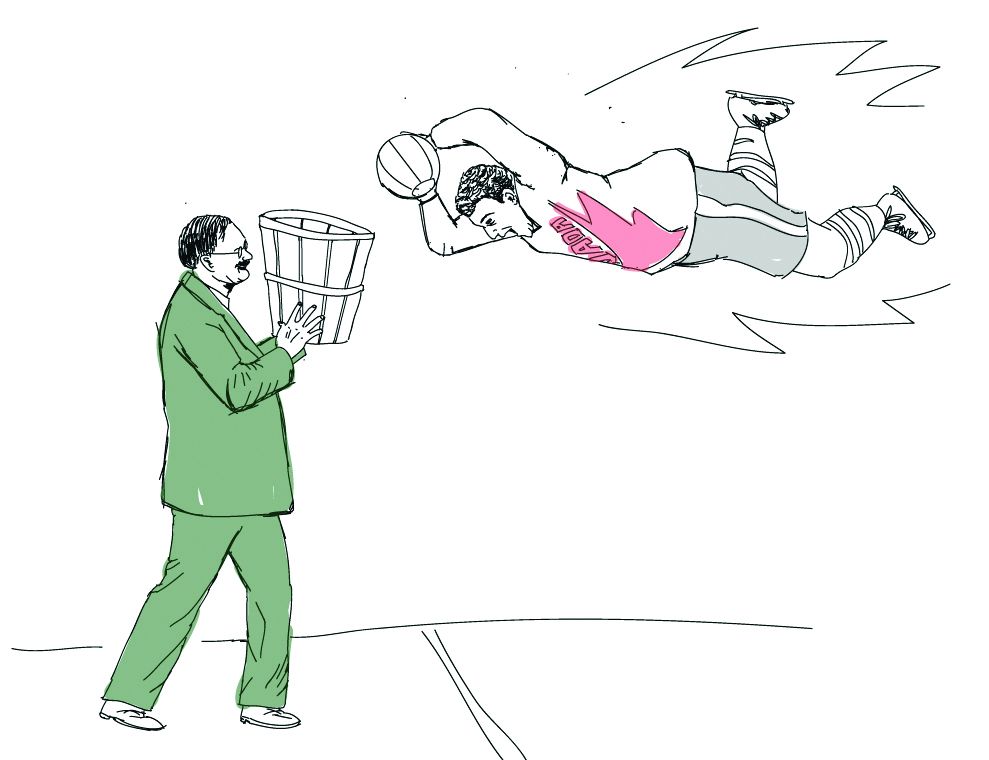Assume for a moment that there is such thing as a “Canadian identity.” I, perhaps naively, would like to imagine that it is complex, subtle and inclusive — something that reminds us that Canada is a country in a “constant state of becoming,” as Daniel Francis suggests, or something that cannot be adequately expressed by a cup of coffee, a “Heritage Minute” or a beer commercial. Such an identity, however, would be highly unmarketable, and will therefore be hard to find at the 2010 Olympic Winter Games in Vancouver.
On Oct. 1, the Hudson’s Bay Company revealed its official Olympic clothing line for the upcoming games. If you haven’t seen it yet, I can get you up to speed: think wool, plaid and ear flaps. The design elements aren’t particularly innovative — consumers can already get wool sweaters at Bluenotes, shiny black tights at American Apparel, plaid items from just about anywhere and stylized-C-with-maple-leaf logos from the Conservative Party. What makes it stand out is that it is being marketed as the official uniform for showing national pride. Fashion could just be a harmlessly superficial way of capitalizing on identity, nationality, international cooperation and athletic competition. It stops being harmless, though, when the HBC tells Canadians that its new line provides, to quote CEO Jeff Sherman, “a sense of history of what it means to be Canadian.”
It seems Canadian history has been confused with Canadian stereotypes. Granted, the HBC, the oldest still-operating company in Canada, engaged in a range of activities well beyond its best-known role in the fur trade. In the late 19th and early 20h centuries, Hudson’s Bay Company servants also worked in the logging, fishing and coal-mining industries. Lots of those employees probably did wear wool, plaid and ear flaps (I can’t imagine any in shiny black tights, but a certain Monty Python sketch about lumberjacks suggests otherwise). But is the uniform of the frontiersman a meaningful source of inspiration for the overwhelmingly urban men and women looking to support Canada in the Olympic Games?
Most contemporary fashions are derivative of previous trends, and there is a certain historical continuity to be found in the HBC’s tendency to import its products, but clothing that sells an ideology should be subjected to more careful scrutiny. The Olympic line is sold using images of “sled dogs, tobogganing, and cross-country skiing through a trail of snowy powder,” and is meant to represent Canadian “tradition and heritage.”
But whose tradition, and whose heritage? The only people I’ve ever seen wear that much patriotism at once were Bob and Doug McKenzie, and those annoying quintuplets on This Hour Has 22 Minutes. The fabrics and designs of the HBC’s Olympic line (shiny black tights notwithstanding) connote rustic outdoorsiness, which is then marketed to Canadian consumers as emblematic of an idealized past. The HBC is creating a myth that takes certain aspects of a resource-driven, masculine lifestyle and projects its values onto the whole of Canadian society. Unfortunately, the sense of adventure so often associated with the concept of a frontier has, historically, represented only one side of the frontier experience. Trading posts, railways, farms, oil fields and logging operations didn’t bring “progress” or “civilization” to a terra nullius — any time the Canadian frontier was pushed forward, traditional indigenous territories shrank or disappeared. The HBC has a presence in Canada’s colonial history (because there is one). And now the HBC is taking the style and values once characteristic of the dominant society (though the style did come more from the working classes of that society) and offering it to citizens who pride themselves on their ethnic and cultural mosaic, at a cost of up to $350 per item. I’m curious to see how this will turn out.
Maybe the HBC will find its new niche in selling national identity as luxury apparel. After all, it’s considered brilliant business sense to find what people don’t have and deliver it to them, for a fee. But don’t take my cantankerous griping too seriously. I’m mostly just disappointed the “historical” product line didn’t include blanket coats (snuggies can’t compare) or the return of HBC-brand smokes and liquor.
Mallory Richard gets her clothing from two-fours.




